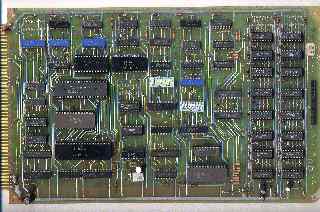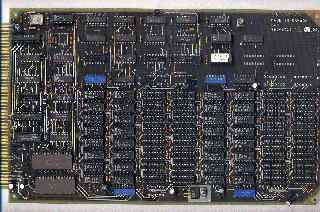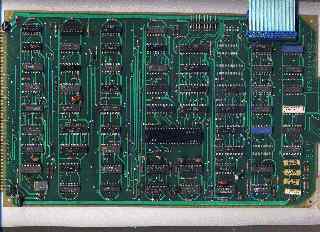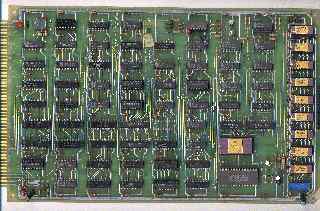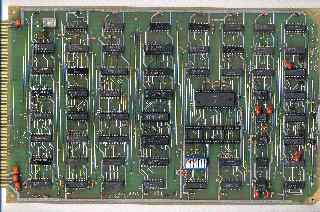1980s Vintage Computers
AES Data Superplus IV
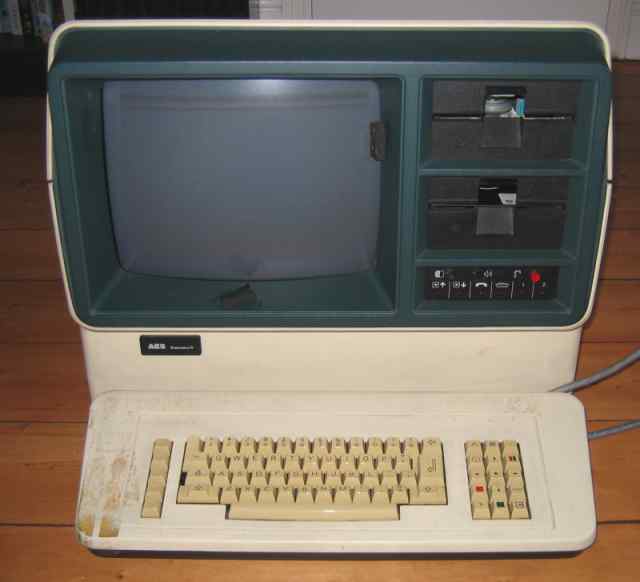
AES Data were a Canadian company, the Superplus IV was sold in 1981 as a dedicated word processor but could have been much more. On the outside can be seen the twin 5.25" floppy drives (standard Tandon TM-100-4 units), a 12" monochrome display and a separate keyboard (which needs cleaning!). The machine uses hard-sector floppies (16-sector) but I have no details on capacity. Inside is a set of five PCBs mounted on a passive backplane, which are an Intel 8080A processor board, RAM board, floppy controller and I/O board, memory board, video board and serial comms board. The main unit is very well made, and extremely heavy - it uses a cast aluminium chassis for example.
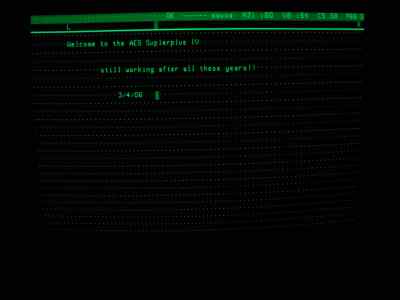 I checked
it out by first removing
the PSU. This powered up OK with a dummy load. I put it back together,
switched on and a tantalum capacitor failed in a dramatic fashion, but once
this was replaced the machine powered up OK. The machine beeps until a
floppy disk is inserted. If the disk doesn't have the boot code the screen
is then filled with 0s or 1s (depending on which floppy drive was used).
Luckily the machine came with a boot disk, which takes about 20s to load,
and it comes up with the Plus word processor, as pictured here. There is one utility disk to
copy data disks, but no means to copy the boot or program disks, or to
format data disks. This machine came with a set of
floppy disks and a manual. The other software looks like extensions to the
WP for record
management. I haven't fully explored all the features, but everything looks to be OK.
I checked
it out by first removing
the PSU. This powered up OK with a dummy load. I put it back together,
switched on and a tantalum capacitor failed in a dramatic fashion, but once
this was replaced the machine powered up OK. The machine beeps until a
floppy disk is inserted. If the disk doesn't have the boot code the screen
is then filled with 0s or 1s (depending on which floppy drive was used).
Luckily the machine came with a boot disk, which takes about 20s to load,
and it comes up with the Plus word processor, as pictured here. There is one utility disk to
copy data disks, but no means to copy the boot or program disks, or to
format data disks. This machine came with a set of
floppy disks and a manual. The other software looks like extensions to the
WP for record
management. I haven't fully explored all the features, but everything looks to be OK.
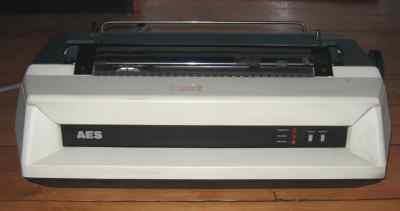 My
machine came with an AES daisy wheel printer, this is powered from the
base unit and uses a custom lead to connect to an edge connector on the
rear of the floppy controller & I/O card.
My
machine came with an AES daisy wheel printer, this is powered from the
base unit and uses a custom lead to connect to an edge connector on the
rear of the floppy controller & I/O card.
Here are the five boards, click on the image for a full-sized view
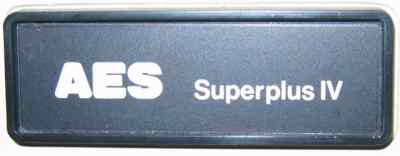 Here is a
close-up of the badge, there is also a label on the bottom which says:
Here is a
close-up of the badge, there is also a label on the bottom which says:
AES Model 103C 220 / 240V 50Hz 4.0A.
AES Data Ltd Montreal, Canada.
There is very little on the web about this machine. There are several mentions of the earlier AES Model 90, and one page on the AES 7100. The manual has a picture of the earlier 'AES Plus', which is similar but has an integrated keyboard. I also read that AES were sold under the Lanier brand in the US, so perhaps the Lanier Model 103 in this collection is the same machine. I understand that the Lanier No Problem was a re-badged 'AES Plus', and the Lanier Super No Problem was a re-badged AES Superplus.
The previous owner told me something of the history of this machine. She said is was bought in 1981 by the International Baccalaureate Office in London for around £13,000 - a lot of money even then. She used it from 1989 to 1991 for word processing and also for accessing Telecom Gold, and was given it to take it home when they upgraded. The word processor had some strange features, such as each page had to be stored as a separate file, which made adding text to page 1 quite a chore!
nb as of 2012 I have sold this machine, many thanks for the emails from users and previous AES/Lanier employees.
This page was last revised on: 21/09/12
